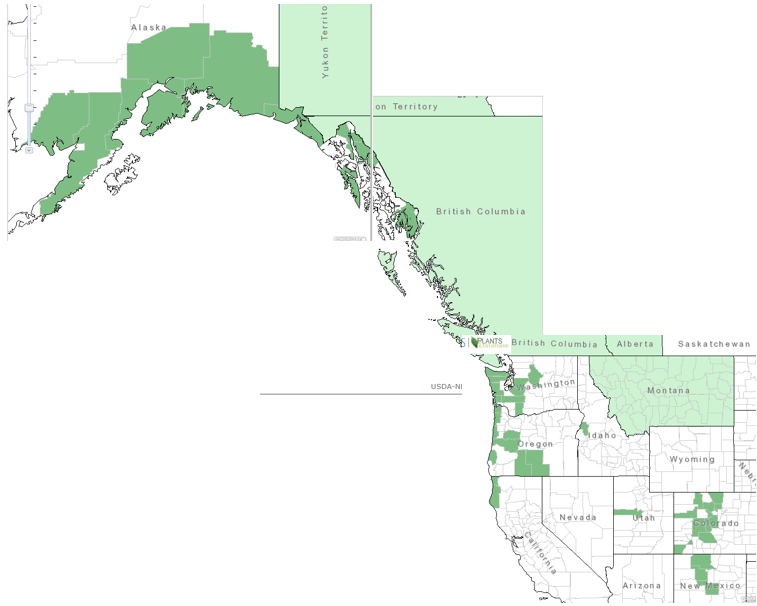Pacific Poison-Oak Anacardiaceae–The Sumac or Cashew Family
Toxicodendron diversilobum (Torr. & A. Gray) Greene
(Tox-ih-ko-DEN-drun die-vers-ih-LO-bum)
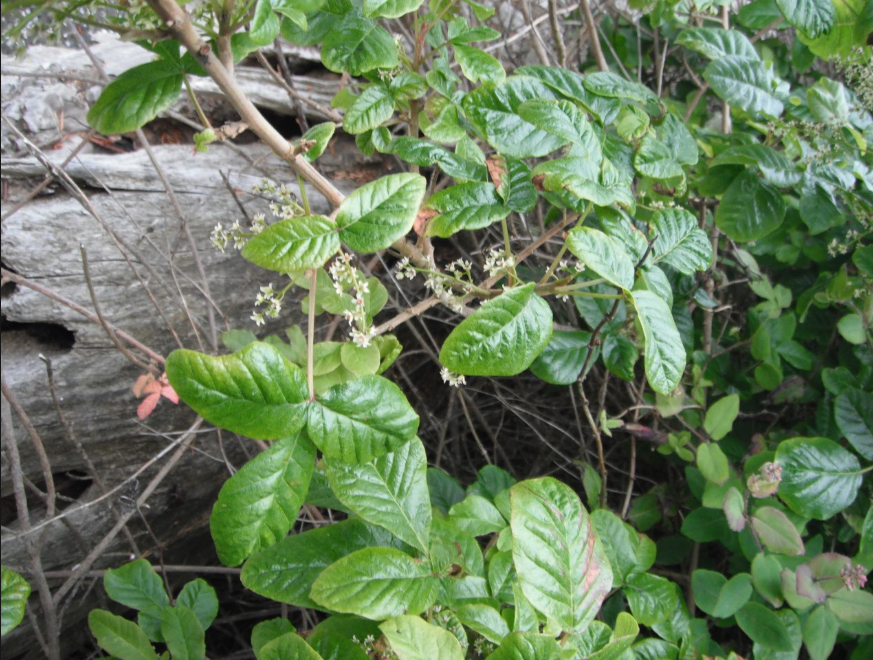 Names: Pacific Poison-Oak belongs to a genus of plants well known to cause severe skin irritation after contact. Toxicodendron means “poison tree.” Diversilobum means “different lobes,” due to its irregularly lobed leaflets that resemble oak leaves. This species may also be called Western or California Poison-Oak or Yeara.
Names: Pacific Poison-Oak belongs to a genus of plants well known to cause severe skin irritation after contact. Toxicodendron means “poison tree.” Diversilobum means “different lobes,” due to its irregularly lobed leaflets that resemble oak leaves. This species may also be called Western or California Poison-Oak or Yeara.
Relationships: Members of this genus were formerly included in Rhus (the sumac genus). There are five species native to North America, including Poison-Ivy, T. radicans, of the eastern United States; and at least one species in South America and several more native to Asia.
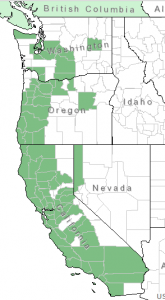
Distribution of Poison Oak from USDA Plants Database
Distribution: It is found from Vancouver Island and nearby islands in British Columbia to Baja California, mostly on the west side of the Cascades in Oregon. In Washington, it is most common on Puget Sound islands and nearby shorelines, and along the Columbia River. It is very common on the west side of the Sierra Nevadas and in the Mojave Desert in California.
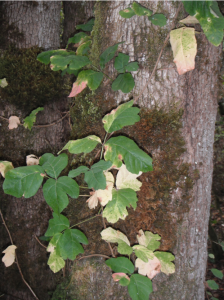 Growth: Pacific Poison-Oak is usually a shrub growing 3-6 feet (1-2m) tall, but sometimes is a vine growing up to 45 feet (15m). As a vine, a Poison-oak climbs trees or other supports by adventitious roots or by wedging stems within crevices.
Growth: Pacific Poison-Oak is usually a shrub growing 3-6 feet (1-2m) tall, but sometimes is a vine growing up to 45 feet (15m). As a vine, a Poison-oak climbs trees or other supports by adventitious roots or by wedging stems within crevices.
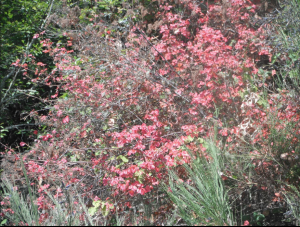
Poison oak is usually a shrub but will sometimes grow as a vine up a tree.
Habitat: It grows in acid soils on dry to moist, rocky slopes or riparian zones; most often with a southerly exposure in the Puget Sound Region.
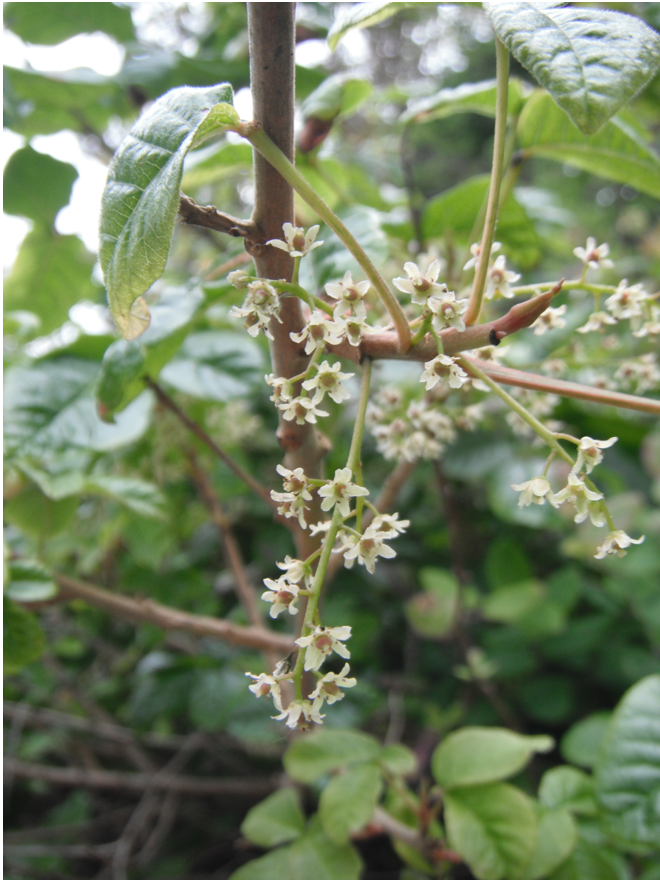
Diagnostic Characters: If it has “leaves of 3, let it be!” is a well-known warning referring to Poison-oaks and Poison-ivies. It is a useful identification characteristic, although sometimes there are five leaflets per leaf. Leaflets are irregularly lobed or scalloped, similar to an oak leaf. or sometimes just wavy or nearly entire. Leaves growing in the sun are often thicker and more waxy. Leaves growing in the shade on climbing vines are often thinner and duller. Small greenish-ivory flowers are borne in axillary clusters; with male and female flowers on different plants. Smooth, white fruits are berry-like. Seeds are white or tan and deeply grooved. Stems exude a milky juice when cut.
In the Landscape: Poison oak is not usually grown in a garden, unless it is a specialty poison garden. It does however have attractive fall foliage of a pinkish hue. In fact, people will sometimes unknowingly pick up the pink leaves on an autumn hike because they are pretty.

Poison Oak has attractive Pink leaves in Autumn.
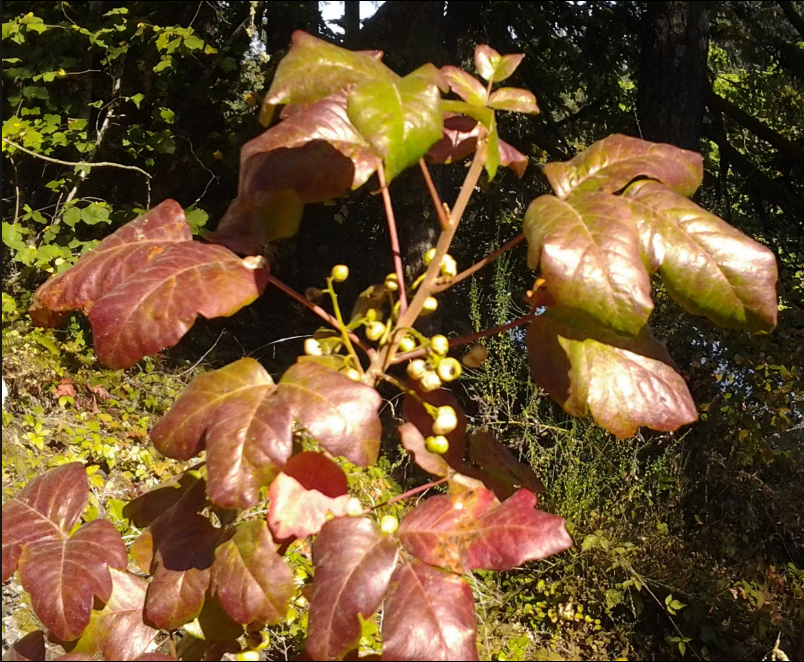 Phenology: Bloom time: April-June; Fruit ripens: August
Phenology: Bloom time: April-June; Fruit ripens: August
Propagation: Seed is best sown in a cold frame as soon as it is ripe. Pre-soaking the seed for 24 hours in hot water prior to sowing in order helps to leach out any germination inhibitors. Cuttings of half-ripe wood are best taken in July/August.
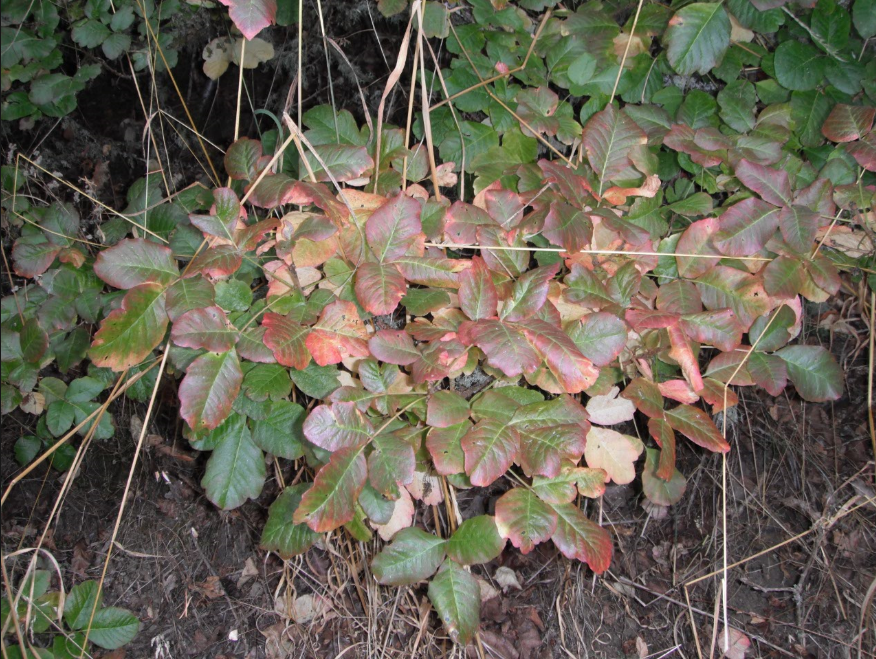
Use by People: Natives used the stems for basketry. Leaves and roots were used for various medicinal purpose. A black dye was made from the ashes or juice of the plant. The resins of some Asian species are used to make lacquer.
Use by Wildlife: The berries have high wildlife value for birds and small mammals, especially Flickers, other woodpeckers and squirrels. Deer will browse the foliage. The shrub is used for nesting and cover by some bird species.
Links:
Consortium of Pacific Northwest Herbaria
WTU Herbarium Image Collection, Plants of Washington, Burke Museum
E-Flora BC, Electronic Atlas of the Flora of British Columbia
Jepson Eflora, University of California
Ladybird Johnson Wildflower Center
USDA Forest Service-Fire Effects Information System
Native American Ethnobotany, University of Michigan, Dearborn

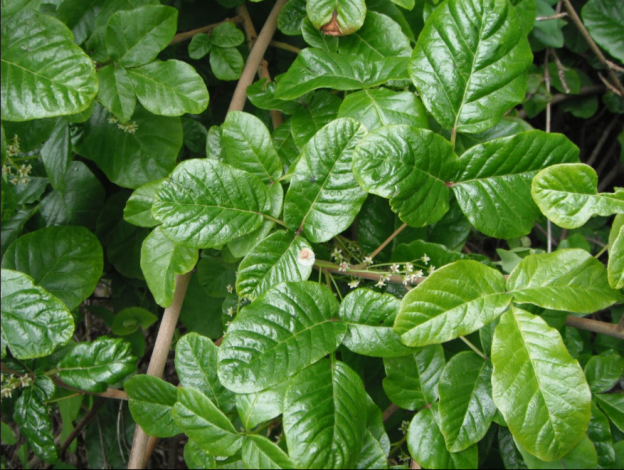
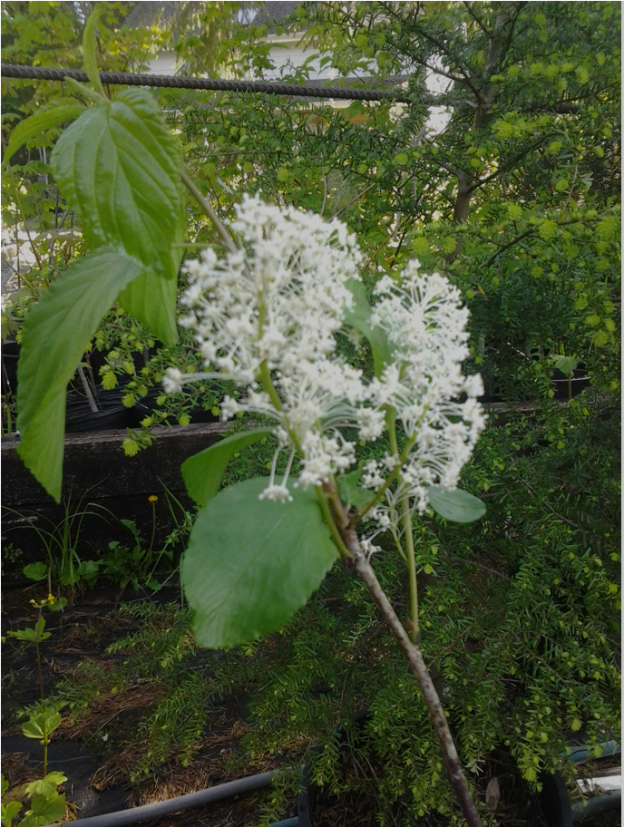
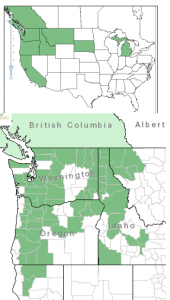
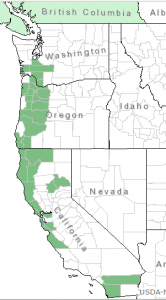
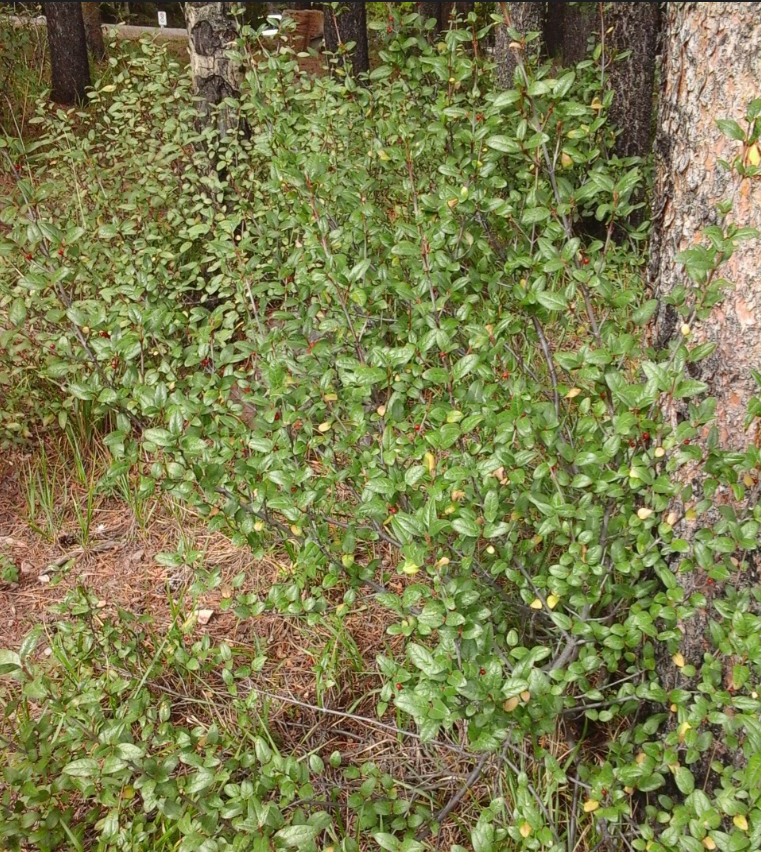
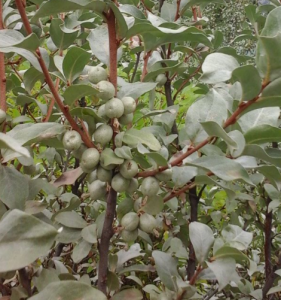
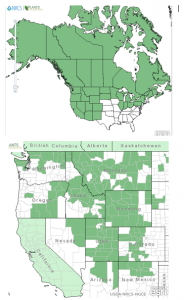
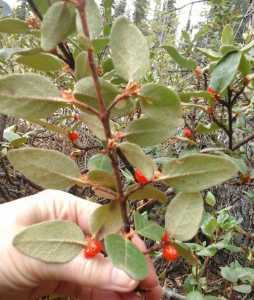 Diagnostic Characters: Leaves are opposite; mostly green on the upper surface, with fuzzy, silvery-white hairs, and rusty brown scales on the undersides. Flowers are small, yellowish-brown, clustered on small branches, often appearing before the leaves; with male and female flowers on separate plants. Fruits are oval, translucent orange-red berries; soapy to the touch when crushed. Stems are covered with brown scales, like Russet Potatoes.
Diagnostic Characters: Leaves are opposite; mostly green on the upper surface, with fuzzy, silvery-white hairs, and rusty brown scales on the undersides. Flowers are small, yellowish-brown, clustered on small branches, often appearing before the leaves; with male and female flowers on separate plants. Fruits are oval, translucent orange-red berries; soapy to the touch when crushed. Stems are covered with brown scales, like Russet Potatoes.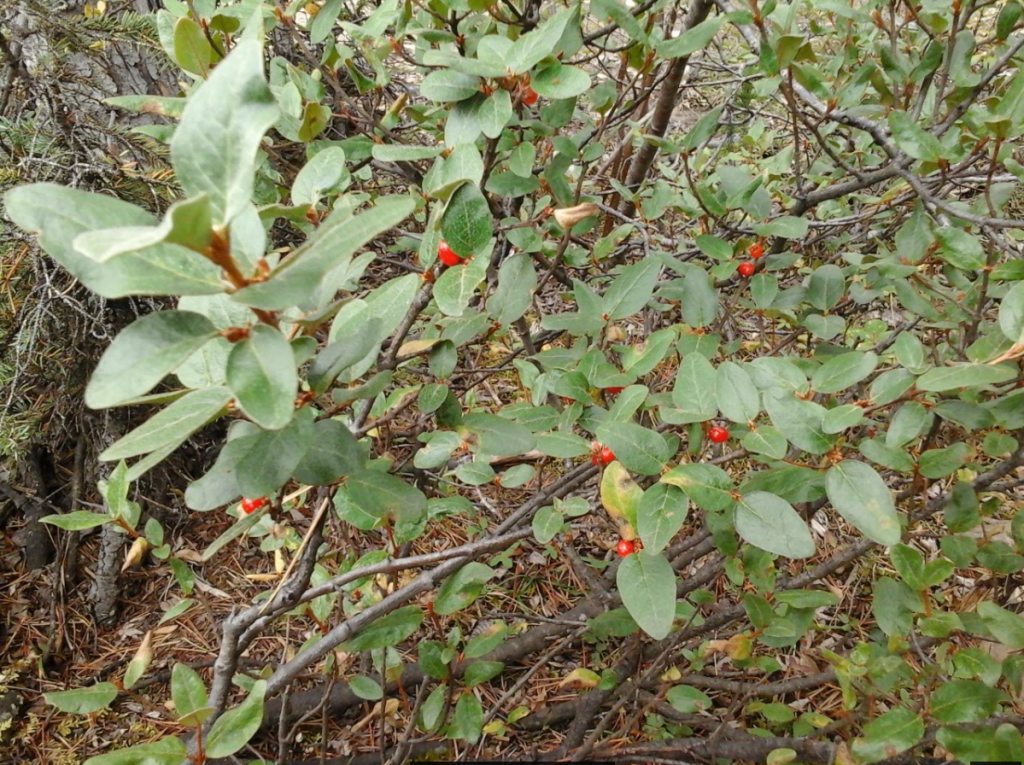
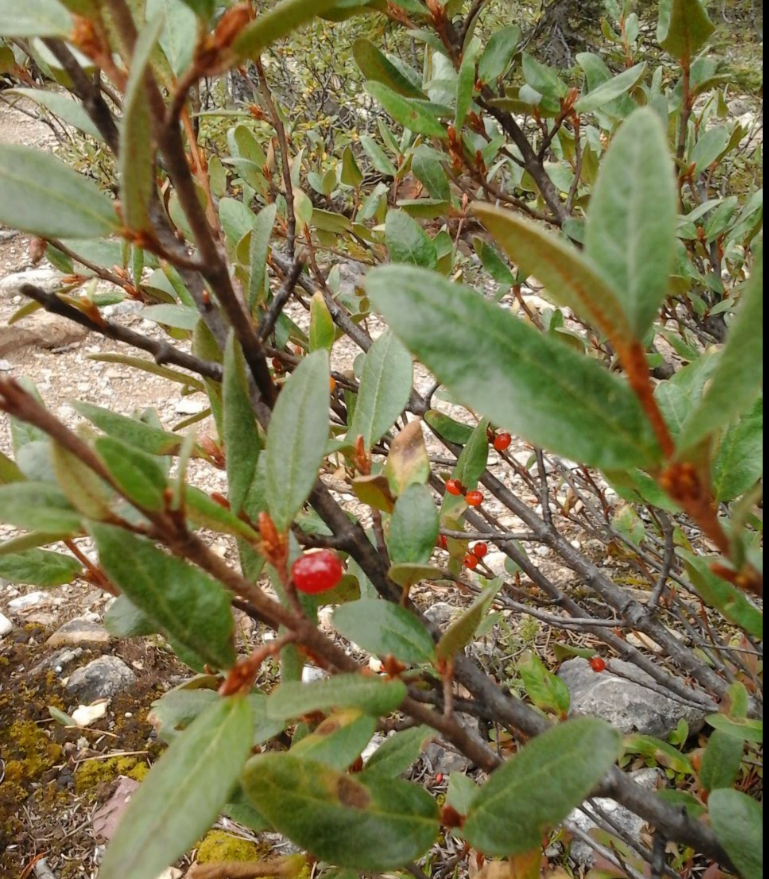
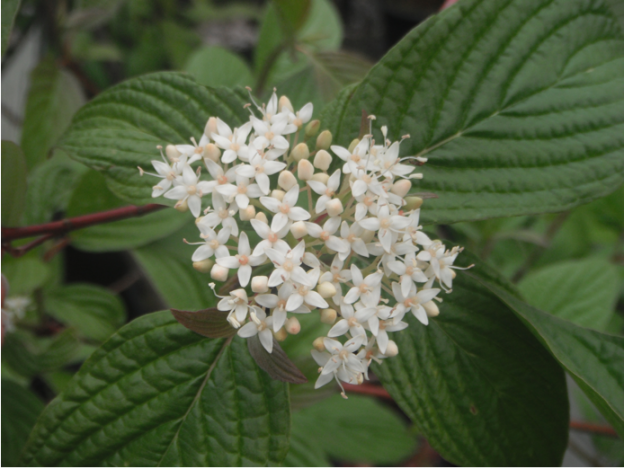
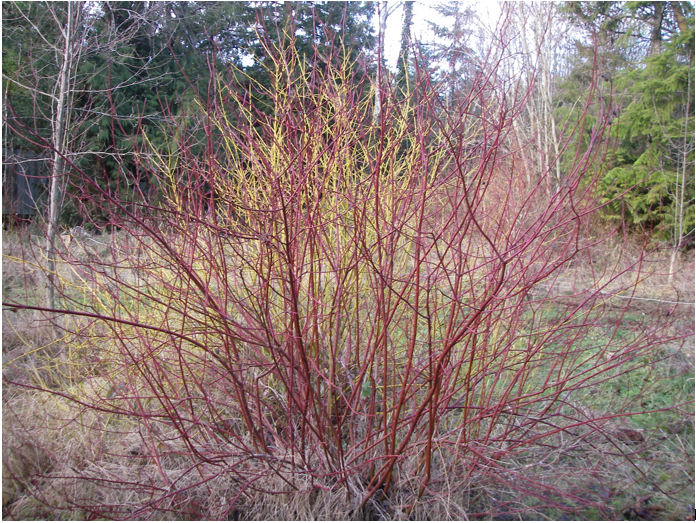
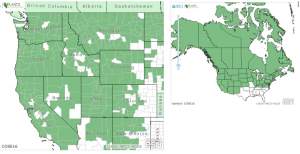

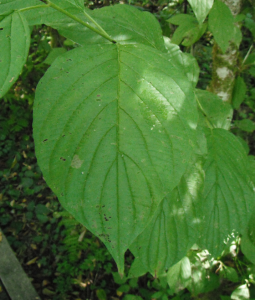 Diagnostic characters: Leaves are opposite, oval-shaped, pointed at the tip with the typical dogwood veining pattern; 5-7 secondary veins arise at the midvein, and run parallel to each other out to the margin, converging at the tip. White threads run through the veins. Flowers are small, white to greenish in dense, flat-topped clusters (bracts not large and showy as in other dogwoods). Fruits are white, sometimes blue-tinged with a somewhat flattened stone pit. Stems are often bright red, especially in winter, but also can be greenish, or yellow.
Diagnostic characters: Leaves are opposite, oval-shaped, pointed at the tip with the typical dogwood veining pattern; 5-7 secondary veins arise at the midvein, and run parallel to each other out to the margin, converging at the tip. White threads run through the veins. Flowers are small, white to greenish in dense, flat-topped clusters (bracts not large and showy as in other dogwoods). Fruits are white, sometimes blue-tinged with a somewhat flattened stone pit. Stems are often bright red, especially in winter, but also can be greenish, or yellow.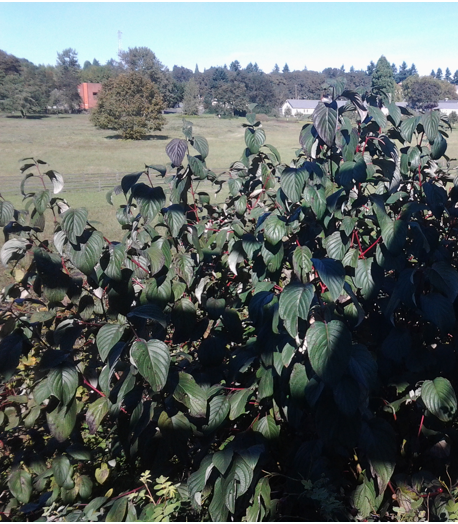 In the Landscape: Red-Twig Dogwood is most often grown for its striking red twigs for winter interest. In fall, its white berries are a striking contrast against its brilliant red fall foliage. It is especially useful for planting in Rain Gardens, around water retention swales, and for stabilizing streambanks, especially where seasonal flooding is a concern. It is good for a quick space-filler and can be used as an effective screen in the summer. This species also shows promise for being useful in reclaiming mining sites with high saline tailings.
In the Landscape: Red-Twig Dogwood is most often grown for its striking red twigs for winter interest. In fall, its white berries are a striking contrast against its brilliant red fall foliage. It is especially useful for planting in Rain Gardens, around water retention swales, and for stabilizing streambanks, especially where seasonal flooding is a concern. It is good for a quick space-filler and can be used as an effective screen in the summer. This species also shows promise for being useful in reclaiming mining sites with high saline tailings.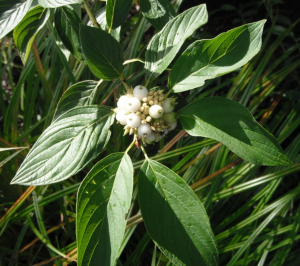 Use by People: Some natives smoked the dried bark during ceremonies (hence the common name kinnikinnik which usually refers to Arctostaphylos uva-ursi). They also boiled it and used it medicinally for coughs, colds, fevers, and diarrhea. The sap was used on arrowheads to poison animals. The berries were eaten by some tribes, often mixed with Serviceberries. The bark was used for dye and the stems for basketry, fish traps, and arrows. The branches are attractive in floral arrangements.
Use by People: Some natives smoked the dried bark during ceremonies (hence the common name kinnikinnik which usually refers to Arctostaphylos uva-ursi). They also boiled it and used it medicinally for coughs, colds, fevers, and diarrhea. The sap was used on arrowheads to poison animals. The berries were eaten by some tribes, often mixed with Serviceberries. The bark was used for dye and the stems for basketry, fish traps, and arrows. The branches are attractive in floral arrangements.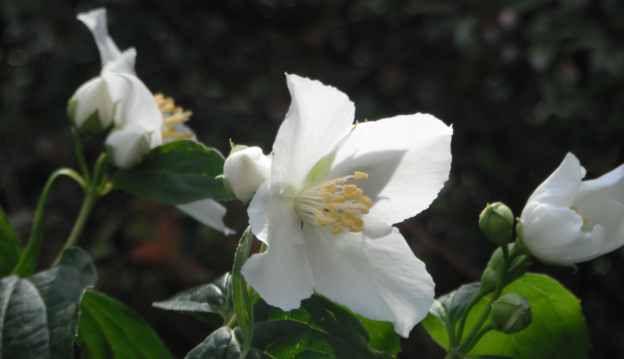
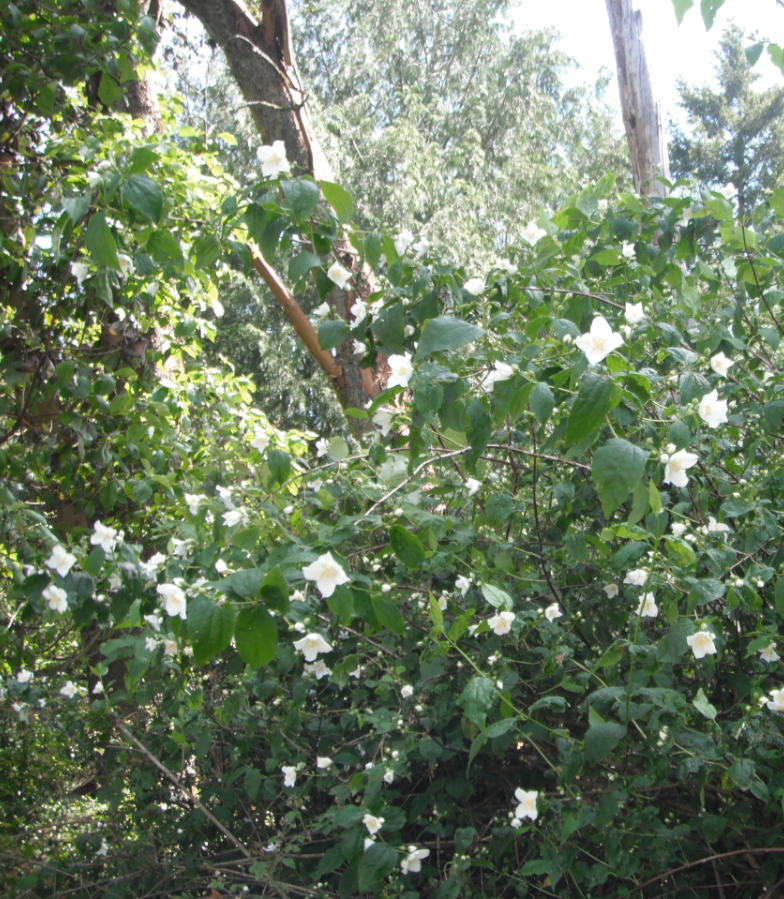 Names: Lewis’ Mock Orange is also known as Wild, Western, Pacific, Idaho or California Mock Orange. Presumably due to its growth habit, it is sometimes also called Syringa, the name for the unrelated lilac genus. Philadelphus means “brotherly love;” named after Pharoah Ptolemy II Philadelphus. The common name, Mock Orange comes from the similarity of the flowers, in fragrance and appearance, to citrus flowers. Lewis’ Mock Orange was discovered by Meriwether Lewis in 1806.
Names: Lewis’ Mock Orange is also known as Wild, Western, Pacific, Idaho or California Mock Orange. Presumably due to its growth habit, it is sometimes also called Syringa, the name for the unrelated lilac genus. Philadelphus means “brotherly love;” named after Pharoah Ptolemy II Philadelphus. The common name, Mock Orange comes from the similarity of the flowers, in fragrance and appearance, to citrus flowers. Lewis’ Mock Orange was discovered by Meriwether Lewis in 1806.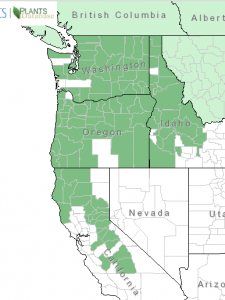
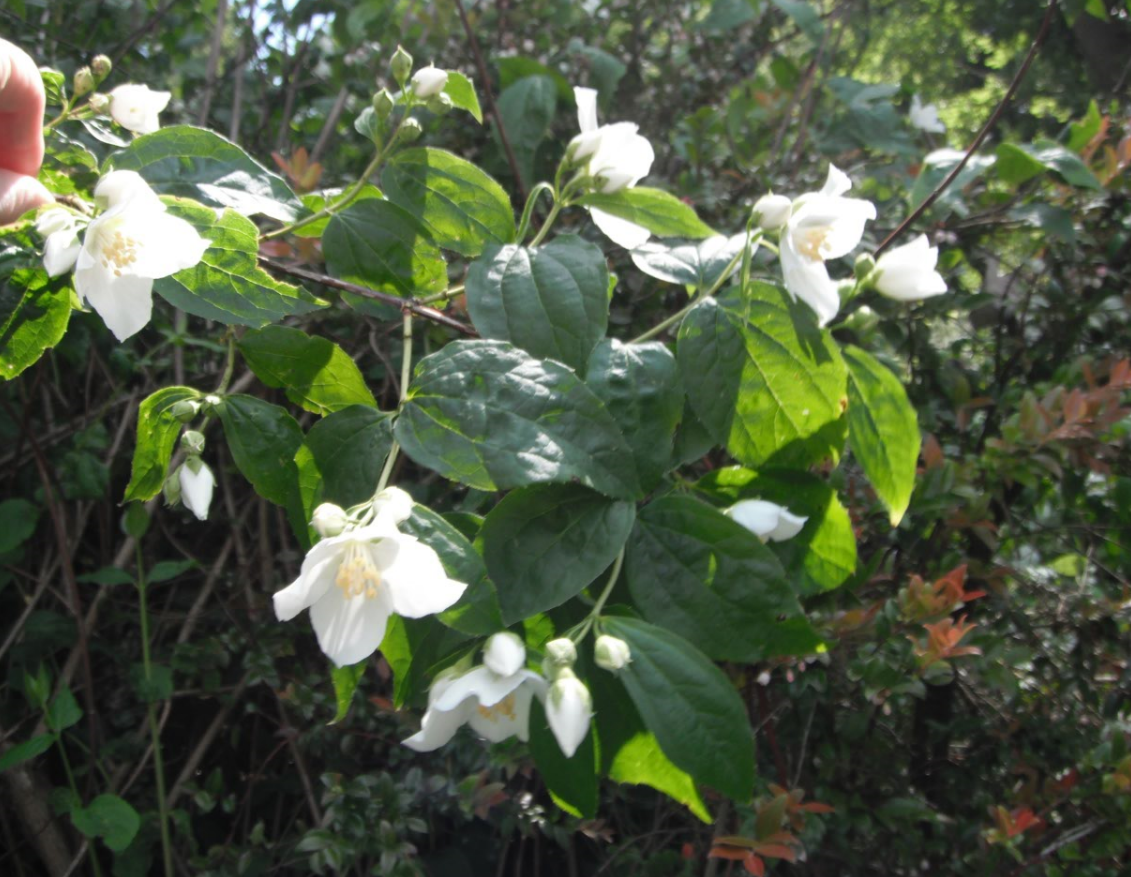
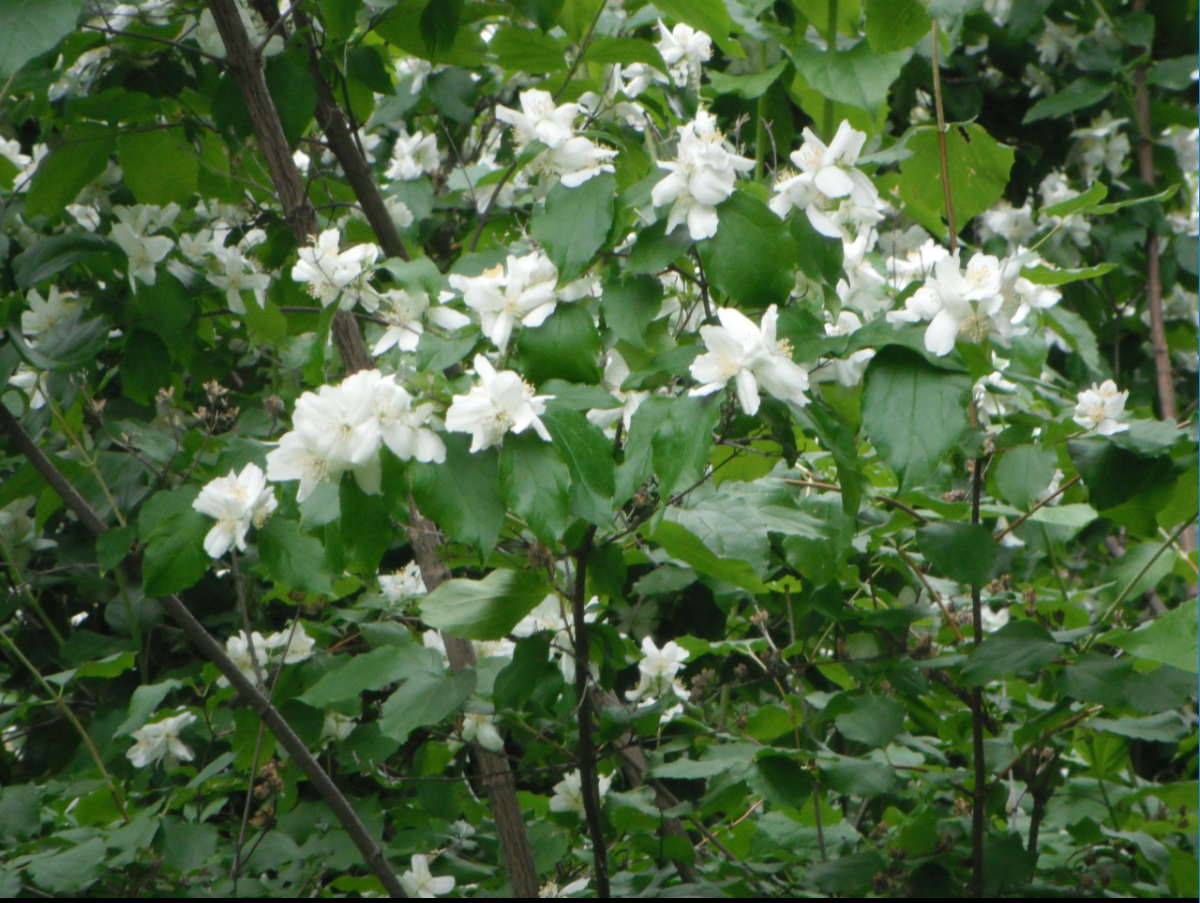
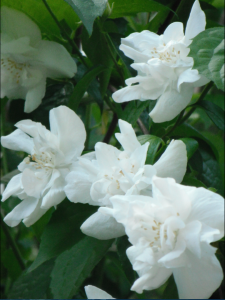
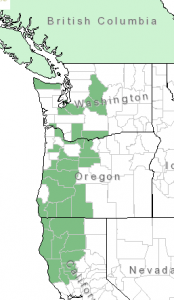
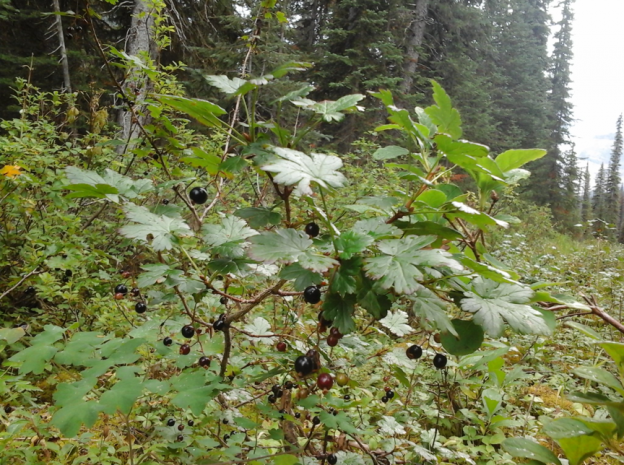
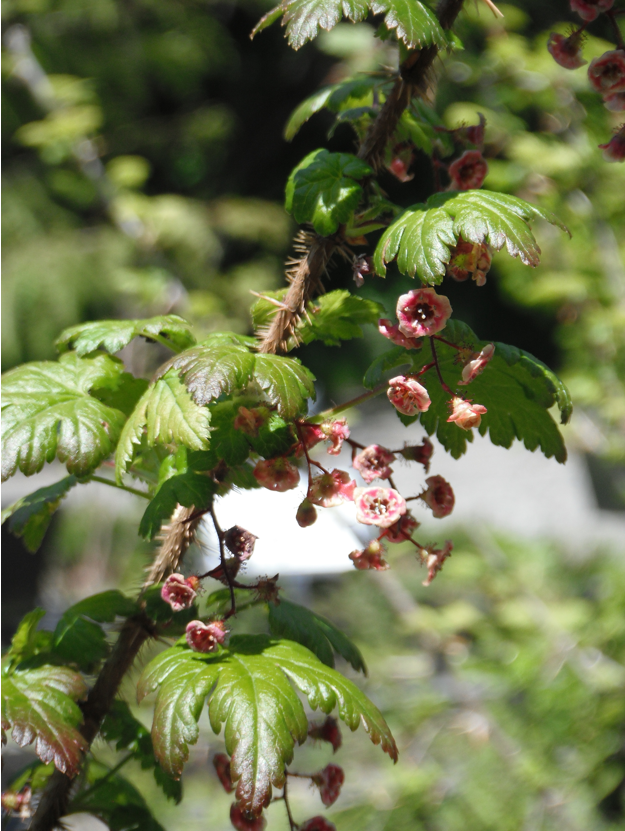 Names: Lacustre means “found in lakes.” Black Swamp Gooseberry has many common names including: Black Swamp Currant; Swamp Black Gooseberry (or Currant); Prickly Black Gooseberry (or Currant); Black Prickly Currant; Bristly Black Gooseberry (or Currant); Black Bristly Currant; Spiny Swamp Gooseberry (or Currant); Swamp Goose Current; Marsh Currant; Lake Gooseberry; and Lowland Gooseberry.
Names: Lacustre means “found in lakes.” Black Swamp Gooseberry has many common names including: Black Swamp Currant; Swamp Black Gooseberry (or Currant); Prickly Black Gooseberry (or Currant); Black Prickly Currant; Bristly Black Gooseberry (or Currant); Black Bristly Currant; Spiny Swamp Gooseberry (or Currant); Swamp Goose Current; Marsh Currant; Lake Gooseberry; and Lowland Gooseberry.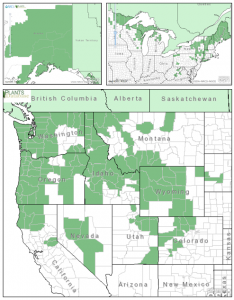
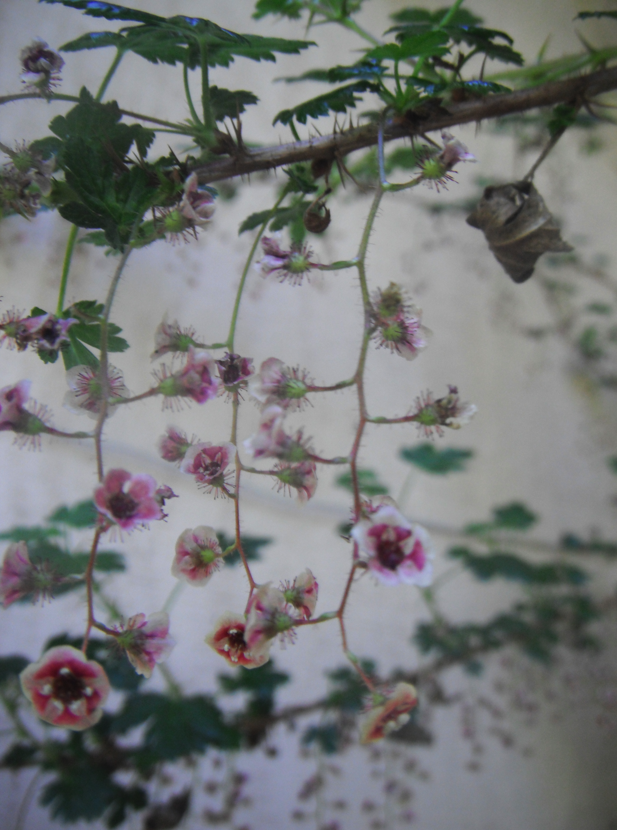 Diagnostic Characters: Stems are erect in sun, spreading or trailing in shade; covered with many golden, bristly, prickles with spines (usually smaller than on R.divaricatum) at the leaf nodes. Leaves are small with 5 deeply indented lobes. Small flowers, 5-15, are borne on pendulous, drooping clusters. Calyces range to a pale yellowish green to a mahogany-red; petals are pinkish. Fruits are dark-purple with glandular hairs.
Diagnostic Characters: Stems are erect in sun, spreading or trailing in shade; covered with many golden, bristly, prickles with spines (usually smaller than on R.divaricatum) at the leaf nodes. Leaves are small with 5 deeply indented lobes. Small flowers, 5-15, are borne on pendulous, drooping clusters. Calyces range to a pale yellowish green to a mahogany-red; petals are pinkish. Fruits are dark-purple with glandular hairs.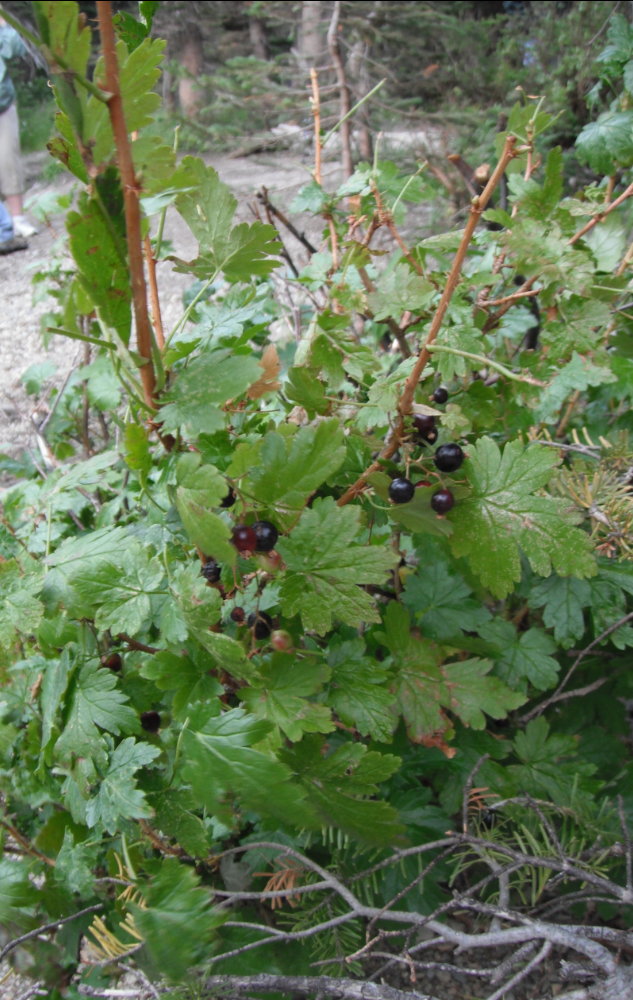 Use by People: The berries were eaten fresh by most of the native tribes of the northwest, although some considered them poisonous. The fruit is said to have an “agreeable flavor,” tart and very juicy, but when crushed it has an offensive odor. The fruit can be made into sauces, jams or preserves. This prickly shrub was thought to have protective qualities to ward off evil and was used to discourage snakes. A tea made from the bark was used drunk during childbirth or as an eyewash for sore eyes. The roots were used to make rope and reef nets.
Use by People: The berries were eaten fresh by most of the native tribes of the northwest, although some considered them poisonous. The fruit is said to have an “agreeable flavor,” tart and very juicy, but when crushed it has an offensive odor. The fruit can be made into sauces, jams or preserves. This prickly shrub was thought to have protective qualities to ward off evil and was used to discourage snakes. A tea made from the bark was used drunk during childbirth or as an eyewash for sore eyes. The roots were used to make rope and reef nets.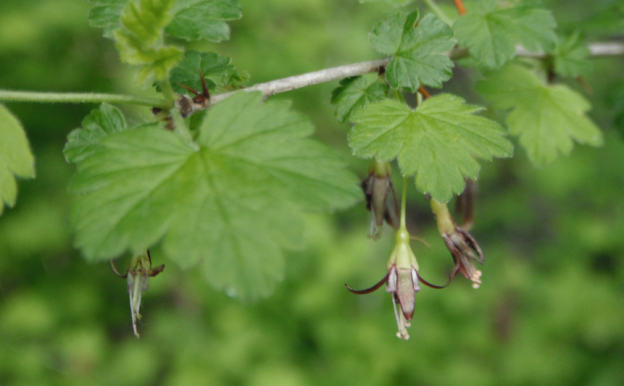
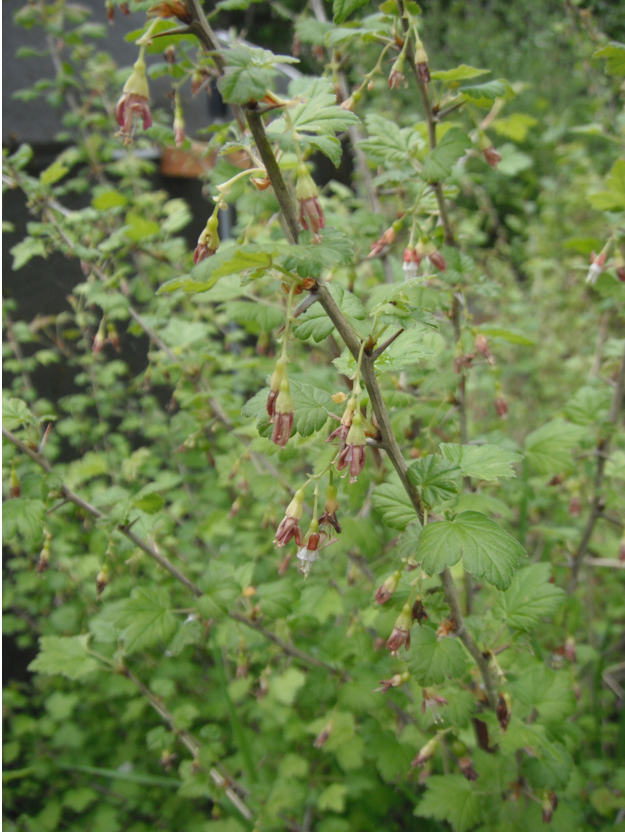 Names: This species has many common names including Wild Black Gooseberry, Spreading Gooseberry, Coast (or Coastal) Black Gooseberry (or Currant), Straggly Gooseberry (or Currant), and Straggle Bush. In the UK it is known as Worcesterberry. Divaricatum means spreading or branching with two forks.
Names: This species has many common names including Wild Black Gooseberry, Spreading Gooseberry, Coast (or Coastal) Black Gooseberry (or Currant), Straggly Gooseberry (or Currant), and Straggle Bush. In the UK it is known as Worcesterberry. Divaricatum means spreading or branching with two forks.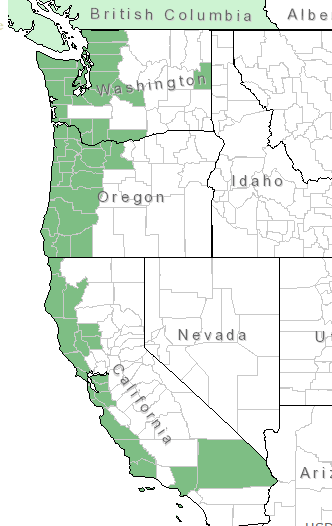
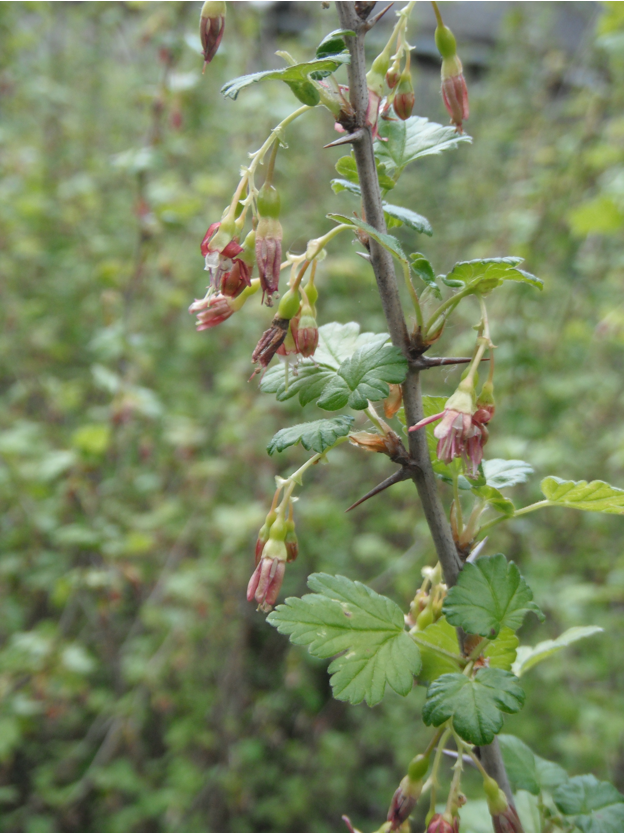 Diagnostic Characters: Coast Black Gooseberry stems grow erect, tending to arch, or they spread with 1-3 stout, chestnut-colored spines at the nodes with occasionally bristles on the internodes (more frequent on young twigs). Bark is gray to somewhat brownish. Leaves are usually 3-lobed, the lower lobes unequally divided again. The leaf petioles are often longer than the leaf blades. Flowers are borne in fuchsia-like, drooping clusters of 2-3. The 5-lobed calyx is usually red or red-green; 5 petals are white to red; 5 stamens and 2 styles extend past calyx lobes. Purplish-black berries are round and smooth.
Diagnostic Characters: Coast Black Gooseberry stems grow erect, tending to arch, or they spread with 1-3 stout, chestnut-colored spines at the nodes with occasionally bristles on the internodes (more frequent on young twigs). Bark is gray to somewhat brownish. Leaves are usually 3-lobed, the lower lobes unequally divided again. The leaf petioles are often longer than the leaf blades. Flowers are borne in fuchsia-like, drooping clusters of 2-3. The 5-lobed calyx is usually red or red-green; 5 petals are white to red; 5 stamens and 2 styles extend past calyx lobes. Purplish-black berries are round and smooth.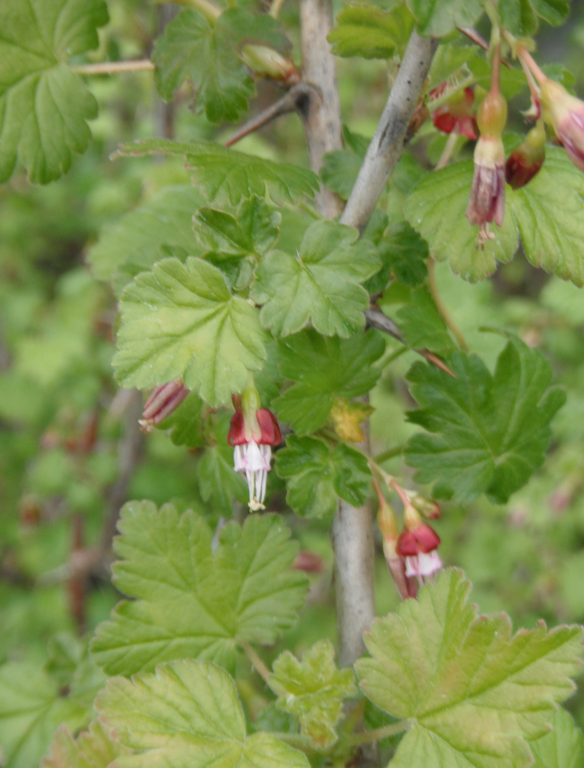 Phenology: Bloom time: April-May; Fruit ripens: July-August.
Phenology: Bloom time: April-May; Fruit ripens: July-August.